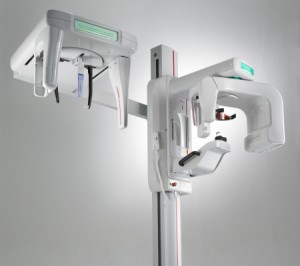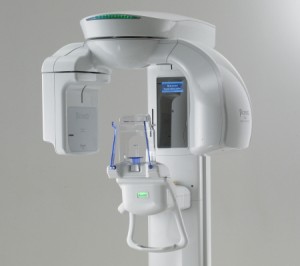Specialist Dental Group is pleased to kick-off our series of blog posts by our individual dental specialists. All views provided are the dentist’s own opinions and are posted on this blog as part of our on-going efforts to educate the public about dental issues and other matters of interest relating to dentistry and healthcare.
It has been just over 6 months since our clinic has obtained a Vatech Cone Beam Computer Tomography X-ray Machine and we have also gone digital with all our regular x-rays. The reason for doing so is simple – it is for the interest of our patients.

Digital x-rays reduce the radiation dosage by half, and therefore result in less radiation exposure for our patients. In addition, it eliminates errors in darkroom processing of x-ray films, thereby reducing the number of repeat x-rays needed. The x-ray image processing takes a few seconds versus 8 minutes for film – definitely a plus for diagnosis and even so for root canal treatment (a procedure most patients do not enjoy).
In the field of dental implants, this means that we can obtain an almost instant appreciation of the 3-dimensional anatomy of the jaw bone. We are thus able to tell our patients in minutes whether implants are possible and what level of confidence we with have with implant success. Previously, we had to send our patients to an outside medical radiology facility – it could up to half a day for the radiology report to be ready. In addition to the increased radiation dose, our elderly patients and less mobile patients dreaded the walk to the facility and the waiting time since they were also lining up with patients from other clinics who needed radiology services. Furthermore, some medical radiologists may not have a good understanding of what dentists are looking for in an x-ray or CT scan. Looking back, I frequently wonder at the amount of time that could have been spent more productively for the patient and for the dentists.

When dealing with pathology in the jaw, we can obtain a 3-dimensional appreciation of the size of the lesions and the vital structures involved. There is no doubt CT scans enhance the diagnosis and management of these procedures. No surgeon should operate if they do not have all the necessary information, especially when the imaging process is non-invasive with lower radiation dose.
While I advise all dental clinics to go digital in their x-rays, I do realize that there are practical considerations for some clinics. Spending a few hundred thousand dollars on x-ray machines may not be financially feasible for a solo dental practitioner.
I am fortunate to be able to work with a group of excellent dental specialists. Besides the intellectual stimulation and the high level of dental service we can provide together as a team, it does gives us some economies of scale to be able to acquire technology that is on the cutting edge. This translates to better care for patients.
Dr Neo Tee Khin is a Director and Prosthodontist with Specialist Dental Group. He is an Adjunct Senior Lecturer with the National University of Singapore and an American-Board certified prosthodontist. Dr Neo is regularly invited to speak at dental conferences in Singapore, Malaysia, Indonesia and the region. He has a special interest in dental implants, crowns and the NobelGuide Teeth-in-an-Hour implant procedure. For more information on Dr Neo, click here.





